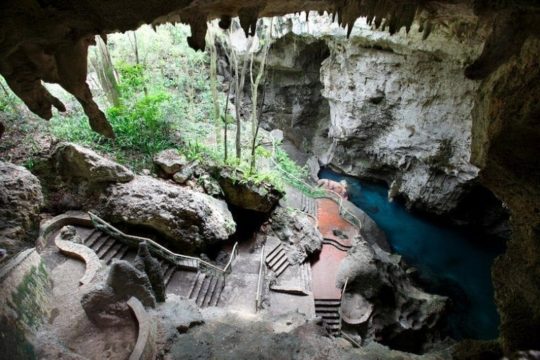The Alcázar de Colón, or Columbus Alcazar, located in Santo Domingo’s Ciudad Colonial, Dominican Republic, and forms part of the Ciudad Colonial UNESCO’s World Heritage Site.
It is the only known residence of a member of the Christopher Columbus’s family, his first-born son Diego Columbus.
It was built on a plot close to the rock islet that look towards the Ozama River, granted to Diego Columbus, firstborn son of the discoverer of the Americas, Christopher Columbus, by King Ferdinand II of Aragon, to build a dwelling for him and his descendants on the island Hispaniola, to which he arrived in 1509 as governor. The building houses the Museo Alcázar de Diego Colón, whose collection exhibits the Caribbean’s most important ensemble of European late medieval and Renaissance works of art, which were acquired in the 1950s.
The Tapestry collection (spanning from the 15th to 17th centuries) is particularly important and unique in the Caribbean, and includes pieces produced by the Flemish Van Den Hecke family from cartouches created by Charles Le Brun. The Alcázar is the most visited museum in Santo Domingo.
The palace is an impressive construction of coralline blocks that once housed some fifty rooms and a number of gardens and courtyards, although what remains today is about half the size it once was. It was built under Diego Colón, the son of Christopher Columbus; when he became the 4th Governor of the Indies in 1509, he ordered the construction of a family home and governor’s mansion between 1510 and 1512. The architectural style is gothic mudejar typical of the early 16th century.
During the early Spanish colonial period, the mansion occupied a very important place in history. It was from here that many expeditions of conquest and exploration were planned. In 1586, the palace was sacked by Sir Francis Drake and his forces.
As the influence of Santo Domingo waned, the house fell into ruins, and by the mid-18th century was abandoned and in danger of rotting away. It was rescued and restored between 1955 and 1957, being transformed into a 22 rooms museum filled with period furniture, artwork, and other accessories. A self-guided tour using a portable audio speaker that discusses each room’s function is available in various languages.



Comments are closed.